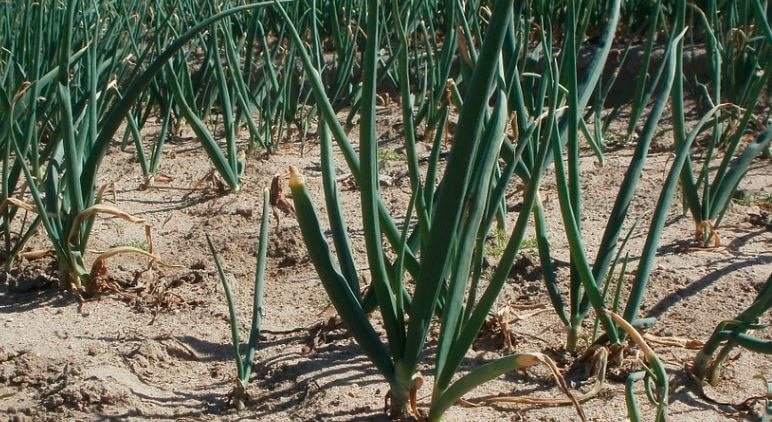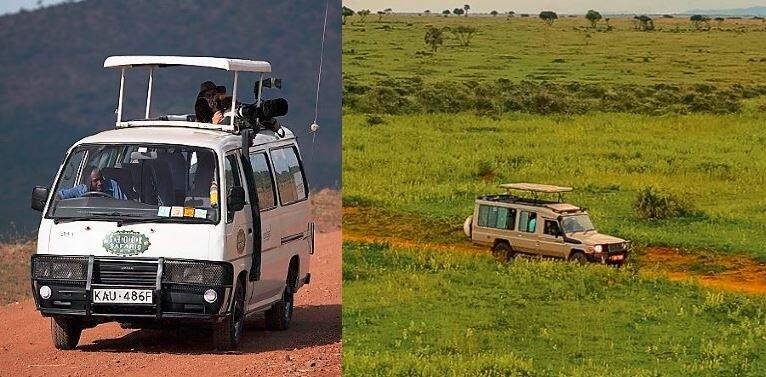Cost is an essential consideration before engaging in any agricultural activity. Onion farming is among the best agribusiness activities in Kenya because this vegetable is used in almost all meals. However, what is the cost of onion farming in Kenya?
The cost of onion farming in Kenya per acre ranges from Ksh. 100,000 to Ksh. 200,000. This cost is highly affected by the cost of the seed. This explains why Kenya imports almost 50% of the onion used from Tanzania. Therefore there is a great opportunity for Kenyans to grow onions as the already existing farmers are unable to meet the high local demand.
But before you venture into onion farming, you should know the capital needed. Onion farming cost in Kenya differs depending on the type of onion. Some onion types are more expensive than others. Nevertheless, you can venture into onion growing according to your financial ability.
What is the Cost of Onion Farming in Kenya Per Acre?
The cost of onion farming in Kenya per acre ranges from Ksh. 100,000 to Ksh. 200,000. This cost of onion farming is highly affected by the cost of the seed. The good news is that if you don’t have this amount as an onion farmer, you can get funds from agribusiness funding sources in Kenya.
Let’s calculate the cost of onion farming in Kenya using an approximate of Ksh. 500 per kg estimation.
Note that the cost is an estimation and might even be less if you get the necessities at a considerably lower price.
| Necessities | Amount | Cost |
| Onion seeds | One acre requires about 100kg of seeds. 1kg costs around Ksh. 500 | 500 times 100= Ksh. 50,000 |
| Fungicides, insecticides, pesticides, and any other | Roughly Ksh. 10,000 | Ksh. 10,000 |
| Fertilizer | Given that garlic is the heaviest of onions, we can estimate. One 25kg bag costs roughly Ksh. 500 | Ksh. 5,000. |
| Miscellaneous | These may include; irrigation transport, labor, and other emergencies. | Ksh. 50,000 |
| Total cost | Ksh. 115,000. |
But if you’re venturing into large-scale onion farming in Kenya, you will require more capital. Since working on several acres of land will require various farm machinery and equipment.
For example, in small-scale farming of one acre of land, you require equipment such as knapsack sprayers, hoes, rakes, and forks.
On the other hand, large-scale farming will require heavy machineries such as windrowing and bagging equipment, under-cutters, and tractors/trailers.
Such latter will be costly, but the yields will undoubtedly be higher.
Related: Profitable Agribusiness Ideas in Kenya
Onion Farming Cost Determinants
You can determine the onion farming cost by identifying the inevitable basic requirements. Some of the determinants you should consider to know the required capital include;
Type of Farming System Used
The amount of capital to invest in onion farming will mainly depend on the farming system you opt to practice. Small-scale farming usually costs lesser than large-scale farming. The larger the farming, the more the production cost.
Farming Land
You will incur extra costs if you rent or purchase farming land. But if you already have the land, you will be exempted from buying the land or the rental fee. Meaning the capital needed will be lower.
Types Of Onions
Before venturing into onion farming, you must understand that various types of onions vary in production cost. Farming spring onion is cheaper than garlic and bulb onion, whereas bulb onion has less cost of production than garlic onion.
Labor
The onion farming cost will significantly depend on the kind of labor to be employed. The production cost will be low if you use cheap local labor or free labor- household members.
Nevertheless, using certain kinds of labor that may require skilled individuals and modern technological machines will be costly. This is because qualified employees will demand higher wages to operate and maintain the appliances.
Distance To The Market
Closeness to the market from your onion farm will reduce the cost of transport. But you’ll incur more transportation costs if your land is located in a remote area with poor infrastructure.
Best Time for Onion Farming in Kenya
Like any other type of crop, onions can’t grow at any time of the year. Onions, particularly bulb onions, don’t just thrive at any location or at any given time. The best time to plant onions in Kenya is during short rains which start from October to December.
Onions are harvested in January and February after planting during the short rains. This is when the weather is hot and suitable for onion harvesting. During the harvesting period, the onions cost is very high since Tanzania has a low supply at this time of the year.
After the long March rains, the onion prices rise, and farmers who harvest after this period make a lot of profits. If you do your timing well, you will have a chance to benefit with considerable profit margins when you supply when the demand is high and supply is low.
Bulb Onion Yield Per Acre
The onion yield depends on the variety. While talking about products, you should also consider the onion bulb’s size since larger bulbs will produce a tremendous output in tonnes of your crop.
Here is a breakdown of the yield per acre and the maturity period of onion as per variety;
Texas Early Grano
This type of onion is well adapted to the tropics. The array takes 120 days to mature after transplanting.
Texas Early Grano can yield up to 21 tonnes per acre. It also has a long shelf life and good transportability.
Bombay Red

This variety matures 150 days after transplanting. You can harvest up to 16 tonnes of Bombay Red per acre.
Red Pinoy
Red Pinoy matures 90 days after transplanting. This variety is capable of yielding up to 30 tonnes per acre. It can stay in storage for up to 6 months if stored at room temperature and low humidity.
Red creole
Red creole is a standard variety in Kenya due to its adaptability to various climatic conditions. It matures 150 days after transplanting. The type can yield up to 16 tonnes per acre.
Conditions for Onion Farming
Onion can grow in various soil characteristics and climatic conditions. For optimum growth, the bulb onion will require;
- A temperature of around 15-30 degrees celsius. If the temperature is above 30 degrees celsius, it will hasten maturity resulting in the production of small bulbs, hence lowering the yields. While cooler temperatures encourage the spread of leaf disease
- An attitude below 1900m above sea level. This guarantees an optimum temperature for onion cultivation.
- Bulb onion does well in well-drained soils. But you can also grow onion in shallow soils if only you adapt your management practices. Fine-tilth sandy to silty loams is suitable.
- Well-distributed rainfall of 500 to 700mm during the growth period. However, you should be aware dry weather will be more favorable during the maturity and the curing process
- A PH of 6.0-6.8. This is to ensure your onions maintain good absorption of macronutrients.
Is Onion Farming Worth the Investment
If done well, onion farming can fetch approximately Ksh. 1,200 per 15kg bag of well dried and cured onions. However, this will significantly depend on the location and specific season. Also, timing is essential when planning to plant bulb onion and profit from it.
Challenges Facing Onion Farming in Kenya
Every investment has challenges, and onion farming is no exception. Some of the Onion farming challenges include;
Pest
Some of the common pests that attack onions include; thrips, leaf miners, nematodes, and maggots. To get rid of these pests, use pesticides from accredited brands.
Diseases
Some common diseases that affect onions include pink/white rot, rust, BacterialSoft Rots, Botrytis, and Downy Mildew. You can control these diseases by use of herbicides.
Rains or Excess Watering
The crop may become waterlogged from excessive watering or too much rain. You can raise beds to ensure water does not flood the field.
The best irrigation method to avoid excessive watering is drip irrigation. Avoid using overhead irrigation as it causes fungal diseases.
Weeds
Weeds can cause damage to your crop. You should remove them occasionally, either physically or by using herbicides. You should do the wedding at least 2-3 times in one season.
Bottom Line
You can use the cost of onion farming in Kenya per acre to estimate the production cost on several acres of land. Onion farming in Kenya is expanding. However, there is still a big room for improvement.
Therefore more people are encouraged to venture into onion farming to meet the high local demand and reduce importation.







